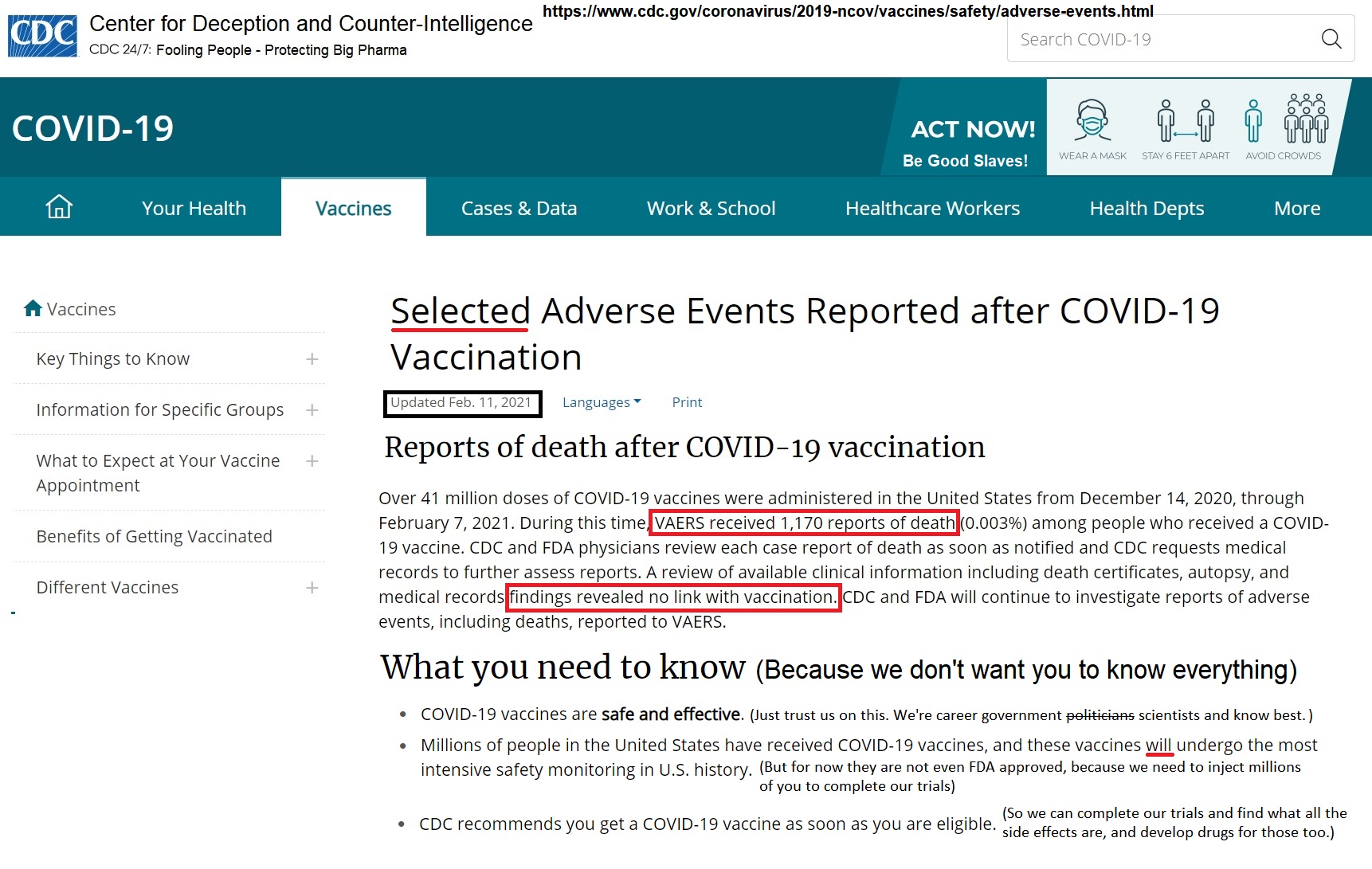

Vaccine data (Covid-19 and other vaccines) taken from CDC’s VAERS website, located here.Vaccine Data by Manufacturer Manufacturer Persons vaccinated with at least one dose. number of covid19 vaccinations based on estimates from CDC’s Vaccination Trends in the US Yearly flu vaccination data covers a period of time from 7/1 to 5/31 of the following year.

number of flu vaccinations based on estimated flu vaccine coverage data from CDC and estimated population data from US Census. Risk of adverse reaction from COVID vaccine is 56 times greater than Flu Vaccine Risk of dying from COVID vaccine is 170 times greater than Flu Vaccine Vaccine Type Flu vaccinations – (last complete flu season) Vaccine Type ‘Risk of Death’ percentages depend on the ‘# of Vaccinations’ data, which is only approximate, and was pulled from the CDC’s report on Flu vaccination coverage for the 2019-2020 season, and from CDC’s Vaccination Trends in the US for the COVID19 vaccinations.Ĭovid19 vaccinations through vs. These set of figures compare the COVID19 vaccine to the traditional Flu vaccines. Pregnancy and birth outcomes (Miscarriages) Total Deaths for All Other Vaccines (1990-present)Īcute Myocardial Infarction (Heart Attack) Total (Non-Lethal) Adverse Events for All Other Vaccines (1990-present) The following table lists the number of adverse events found in the VAERS data which match the outcomes listed above: FDA Listed Symptom Source: ‘ Vaccines and Related Biological Products Advisory Committee October 22,2020 Meeting Presentation”.The slide below was taken from an FDA document from Octoand provides a list of possible adverse event outcomes related to the Covid-19 vaccines. *Note that the total number of deaths associated with the COVID-19 vaccines is more than double the number of deaths associated with all other vaccines combined since the year 1990. # of Permanent Disabilities after vaccination and foreign data, and is updated through: High-Level Summary The event may have been related to an underlying disease or condition, to drugs being taken concurrently, or may have occurred by chance shortly after a vaccine was administered.All charts and tables below reflect the data release on from the VAERS website, which includes U.S. When reporting and evaluating data from VAERS, it is important to note that for any reported event, no cause and effect relationship has been established. Such data are subject to limitations of under-reporting, simultaneous administration of multiple vaccine antigens, reporting bias, and lack of incidence rates in unvaccinated comparison groups. VAERS data are from a passive surveillance system and represent unverified reports of adverse events temporally associated with one or more vaccines. The incidence rate (how often events occur) cannot be calculated from VAERS data, because not all events are reported and the exact number of administered doses cannot be known. In addition, the National Childhood Vaccine Injury Act of 1986 (NCVIA) requires health care providers and vaccine manufacturers to report to the DHHS specific adverse events following the administration of those vaccines outlined in the Act.Ī balance must be struck in reducing the burden on voluntary reporters while providing enough data to produce necessary "signal flags" to trigger analysis of potential significant events and trends. The primary purpose for maintaining the database is to serve as an early warning or signaling system for adverse events not detected during pre-market testing. Although complete information greatly enhances the analysis of vaccine safety, in order to capture as many reports as possible, reports with less complete information will be included in the database. The information collected into the VAERS database comes from a wide array of sources, including patients and parents, state health agencies, pharmacies, health care providers, and the makers of the vaccines.


 0 kommentar(er)
0 kommentar(er)
